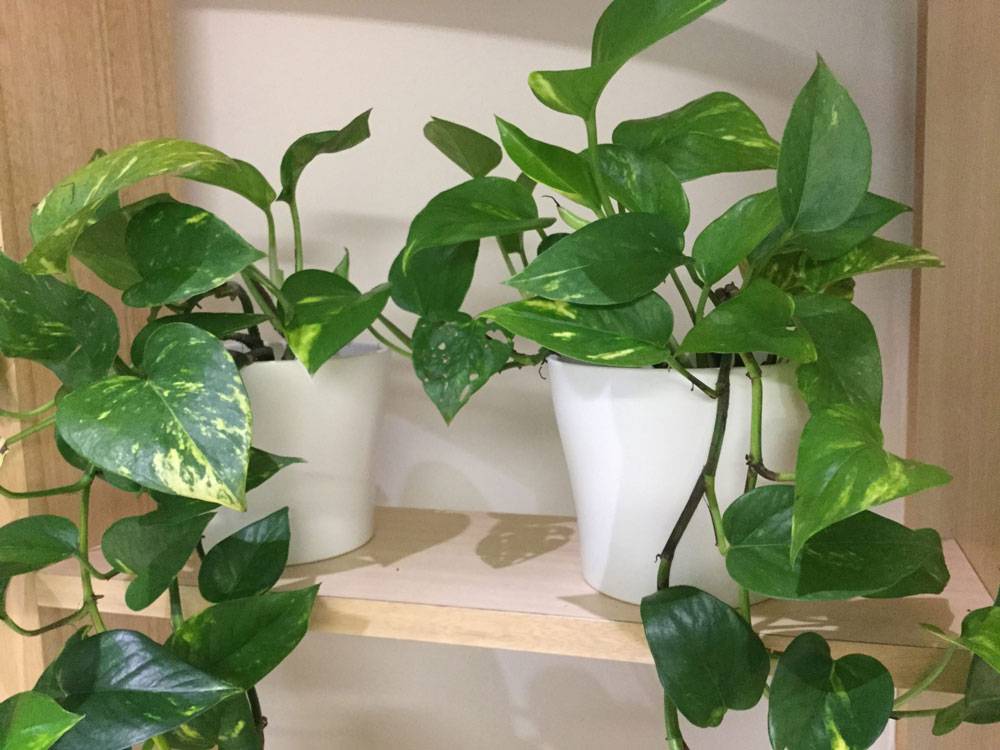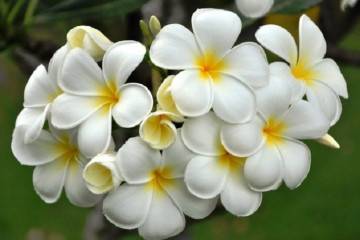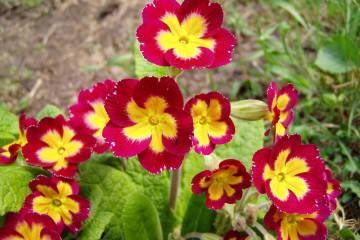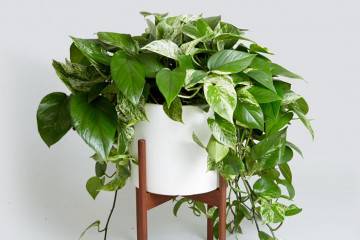Scindapsus - home care and breeding methods
Content:
Atlas potos, silver philodendron, silver grapes, silk potos. These are all names for the same popular indoor plant, the climbing scindapsus pictus.
Scindapsus pictus is a well-known houseplant. The liana-like growth makes it a great option for those looking for a climbing plant, and the soft silvery-green speckled leaves look beautiful in the interior.
What does it look like, which family it belongs to
The climbing vine scindapsus belongs to the Araceae family. The common name comes from ancient Greek and means "ivy-like". About 20 plant species are known. All of them are curly, rising with the help of aerial roots. The large, heart-shaped, dark green leaves have silvery-gray patches that give them a satin sheen and originality.
A common indoor flower called scindapsus resembles the small-leaved philodendron with which it is related. The most popular house-grown species is scindapsus aureus. Adult plants grow to a considerable size (up to 60 cm). Therefore, they are suitable for large interiors.
History of appearance
The Scindapsus n Joy flower was introduced from Asian countries as an ornamental one. It takes root well in ordinary city apartments. For a Scindapsus plant, home care is very simple.
There are many stories and superstitions associated with the plant. Among Asians, this flower is considered the keeper of the hearth.
Homeland of the plant
Liana is of tropical origin. It grows in the Solomon Islands and Southeast Asia.
At home, she loves to wind through trees, crawl along mountain slopes. Has a thermophilic nature, unpretentious in care.
Features of home care
Growing satin or gold potatoes is easy. There are a number of factors that affect its growth.
Temperature
The areas in which scindaptus pictus grows are characterized by a tropical hot and humid climate. Therefore, you need to try to keep the plant away from the cold.
The temperature should be between 18-29 degrees Celsius. Do not expose the atlas potos to temperatures below 16 degrees, even for a short time, because the cold air will damage the foliage.
Lighting
The flower does not like direct sunlight and dry air. Scindapsus pictus should be provided with bright, indirect light all year round. Sharp, direct rays will scorch its leaves, and too little light will make the leaves look dull and ugly. You can get lush foliage by keeping the plant in a bright area out of direct sunlight.
Watering
Watered in moderation, but rarely - once a week. Care must be taken not to overfill the roots with water. The soil should be slightly dry at the top and slightly damp at the bottom.
Spraying
You can keep your plant healthy by increasing the moisture around it with frequent spraying. To do this, you can use a conventional sprayer, which is applied with a glass cleaner.
Humidity
The plant is tropical, therefore it loves high temperature and humidity. To increase the humidity in the surrounding air, you can use a spray method or install a humidifier in the room. The flower feels good next to the aquarium, which gives constant vapors.
Priming
To simulate tropical conditions, you need to choose a substrate that retains moisture, but does not allow stagnation and decay.
Top dressing
In order for scindapsus pictus to grow to its full potential, you can use regular houseplant fertilizer about once a month. Be sure to stop fertilizing in winter, as this can cause root burns.
Support
Liana does not need special support. But it should be located close to a wall or cabinet. A unique flower creeps along a vertical surface, attaching itself with air roots.
When and how it blooms
In indoor conditions, it blooms extremely rarely. Small flowers appear only in natural conditions.
Types of flowers:
- white;
- red;
- pink.
The shape of the flowers is like small stars.
The flowering period can be in spring or summer when active growth occurs.
Pruning
The plant benefits from periodic pruning, which helps it branch out and become more lush. Spring is the best time to prune.
How does it multiply
Many florists and hobbyists who grow scindapsus are interested in how to propagate it. For creepers, scindapsus, reproduction can occur in two ways.
Propagation by cuttings
In the spring, shoots with a length of 10 cm are chosen. They are carefully cut off from the main trunk and inserted into a container filled with a moist peat mixture. Cuttings root easily after about a month.
Reproduction by layering
For layering, you need to take a young shoot 10-20 cm long and dig in next to the main plant. When the roots are put down, the new flower is simply transplanted into another pot.
Transfer
The transplant should be done in the spring, when the plant outgrows the pot. The new flowerpot should be 1-2 cm larger, because a too massive container will accumulate a lot of excess moisture, which will lead to rotting of the roots. A pot with drainage holes must be used. For planters, it is best to insert the pot into the pot, with drainage in between.
Possible problems
Diseases can occur during cultivation for several reasons.
Pests
Most often, the plant infects aphids or bugs. Bordeaux liquid or conventional preparations that are sold in flower shops will help get rid of pests.
Other problems
Diseases usually appear on leaves that begin to turn yellow or fade:
- brown leaf tips are caused by dry air;
- yellow leaves are a sign of over-watering;
- brown spots surrounded by yellow halos indicate the presence of bacteria.
The affected leaves must be removed.
Scindapsus: types
There are several varieties that differ in color and size of leaves. Some species have small white-spotted leaves (scindapsus pictus argyraeus) called satin potos. Others have large leaves with a silver color (marble queen scindapsus) and are called "silver philodendron". There are light green plants (scindapsus neon). And, for example, a beautiful painted scindapsus does not require special care at home.
Some of the species are listed below, although there are more than 20 of them:
- scindapsus engoy;
- scindapsus marble queen or scindapsus marble queen;
- scindapsus epipremnum.
Is it possible to grow scindapsus at home
Scindapsus pictus is toxic to pets and children. The fibrous structure of the variegated plant is rich in calcium oxalate and can burn if touched. Therefore, the flower should be placed out of the reach of animals and children.
Thus, the scindapsus looks great in the interior and it is quite easy to care for it. It is recommended to be used for decorating offices and municipal institutions.




















